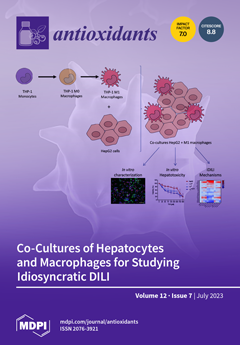Clostridium perfringens causes necrotic enteritis (NE) after proliferation in the intestine of poultry, resulting in considerable losses to the poultry industry. This study aimed to investigate the impact of tannic acid on the antioxidant, immunity, and gut health of broilers with NE. In the experiment, 630 one-day-old Cobb500 male chicks were randomly divided into six treatment groups, with seven replicate cages and with fifteen birds in each cage. The treatment groups were as follows: control group (NC), challenged group (PC), and challenged NE chickens treated with 250, 500, 750, and 1000 mg/kg tannic acid (PTA1, PTA2, PTA3, and PTA4, respectively). To induce NE, coccidia vaccine and
Clostridium perfringens were administered on day 19 and days 22–28, respectively. Indexes related to antioxidant, immune, and intestinal health were measured on days 28 and 35. During the infection period, we observed significant increases in fecal water content, D-LA, TNF-α, and malondialdehyde concentrations (
p < 0.05). Conversely, significant decreases were noted in chyme pH and in T-AOC, IL-4, and IL-10 concentrations (
p < 0.05). The addition of tannic acid exhibited a linear decrease in fecal water content and TNF-α concentration (
p < 0.05). Furthermore, tannic acid supplementation resulted in a quadratic curve decrease in D-LA concentration and linear increases in T-AOC, IL-4, and IL-10 (
p < 0.05). Cecal microbiological analysis revealed that Ruminococcaceae and
Butyricimona were dominant in PTA3. In conclusion, the dietary addition of tannic acid may reduce the negative effects of NE by increasing antioxidant and anti-inflammatory capacity, improving the intestinal barrier, and regulating the intestinal flora.
Full article






